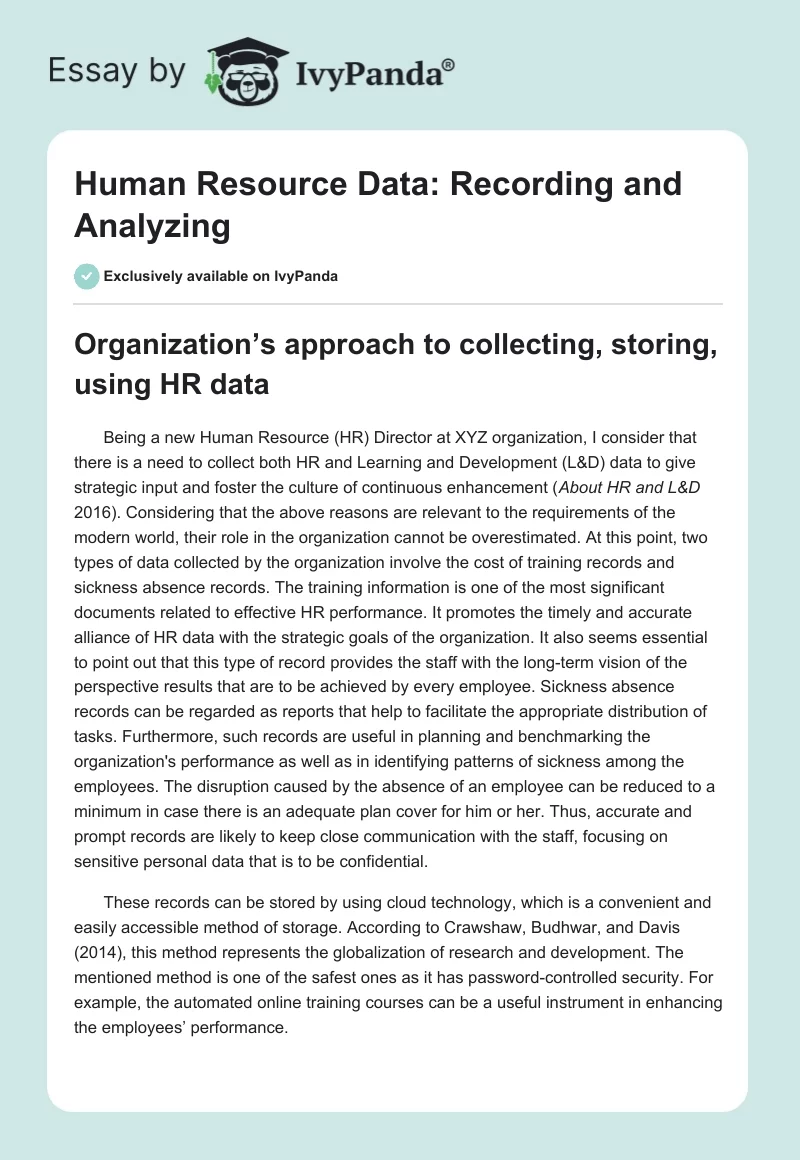Organization’s approach to collecting, storing, using HR data
Being a new Human Resource (HR) Director at XYZ organization, I consider that there is a need to collect both HR and Learning and Development (L&D) data to give strategic input and foster the culture of continuous enhancement (About HR and L&D 2016). Considering that the above reasons are relevant to the requirements of the modern world, their role in the organization cannot be overestimated.
t this point, two types of data collected by the organization involve the cost of training records and sickness absence records. The training information is one of the most significant documents related to effective HR performance. It promotes the timely and accurate alliance of HR data with the strategic goals of the organization. It also seems essential to point out that this type of record provides the staff with the long-term vision of the perspective results that are to be achieved by every employee. Sickness absence records can be regarded as reports that help to facilitate the appropriate distribution of tasks.
Furthermore, such records are useful in planning and benchmarking the organization’s performance as well as in identifying patterns of sickness among the employees. The disruption caused by the absence of an employee can be reduced to a minimum in case there is an adequate plan cover for him or her. Thus, accurate and prompt records are likely to keep close communication with the staff, focusing on sensitive personal data that is to be confidential.
These records can be stored by using cloud technology, which is a convenient and easily accessible method of storage. According to Crawshaw, Budhwar, and Davis (2014), this method represents the globalization of research and development. The mentioned method is one of the safest ones as it has password-controlled security. For example, the automated online training courses can be a useful instrument in enhancing the employees’ performance.
The general trend of the development of electronic documents shows that the replacement of paper documents is likely to become a mass phenomenon (Crawshaw, Budhwar & Davis 2014). Currently, many organizations are beginning to replace their paper documents with electronic ones as it assumes that their safety, readability, and authenticity will be ensured throughout the storage period.
At the same time, cloud technology offers excellent storage capabilities, a requisite search engine, and the ability to print electronic documents, thus converting them into the form of paper. Another essential method of storing is a manual form, when all the records are kept in folders, providing a well-organized system (Wilton 2016). Among other benefits, one can note cheapness, a widely-used format, and no need to use computer technology.
Analysis of the data in the area of the level of sickness absence
The summary of two essential items of the UK legislation concerning the field of storage, accessibility, and recording of data are presented below. The Freedom of Information Act (FOIA) provides the opportunity to release information that was previously undisclosed (Morgan & Boardman 2012). This legislation establishes extensive requirements in accordance with which official information should be available for public scrutiny. At this point, the UK courts have repeatedly emphasized that according to FOIA, federal agencies should promptly and conscientiously respond to citizens’ requests for information.
In its turn, the Data Protection Act (DPA) serves as a protection of privacy of personal data, focusing on such sensitive information as ethnic, religious, political, health, and criminal records (Morgan & Boardman 2012). In particular, DPA states that organizations and government have to be responsible for personal data, following accuracy, security, legality, and other specifics.
A particular area selected for the analysis relates to the level of sickness absence in the UK. The Absence Management survey report presented by the Chartered Institute of Personnel and Development (CIPD) organization and Simplyhealth reveals core HR and L&D data related to the cost of absence and absence levels (CIPD 2016a). The investigations of this data are essential to identify the perspective policy in relation to sickness absence in the organization. Based on trends and practice, the report states that “giving sickness absence information to line managers are in their top three most effective approaches for managing absence” (CIPD 2016b, p. 48). The detailed information is presented below.
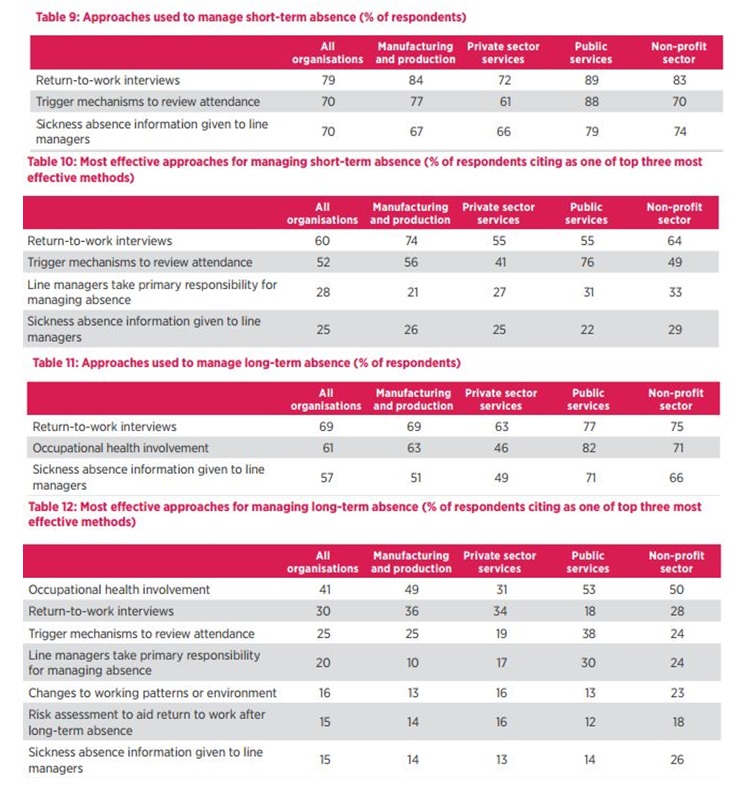
As for information about a personal organization, I can point out that sickness absence can lead to serious costs in the bank field. If employees decide to work even if they are sick, there is a high chance that several weeks after sickness leaves will increase because several other coworkers will also catch a cold (the primary reason behind all sick leaves) (See Figure 1).
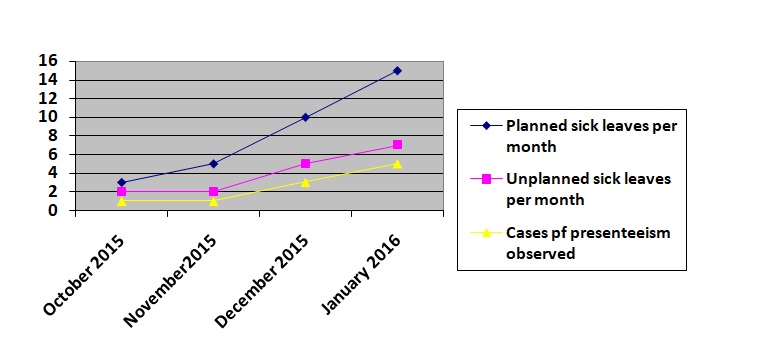
It should also be noted that more and more employees tend to take sick leaves due to seasonal activities or illnesses. Month-to-month trends indicate that the majority of sick leaves during winter months are related to the common cold, whereas sick leaves during summer (July and August in particular) are due to traumas and injuries, possibly because of the increased time spent on outdoor activities (see Figure 2).
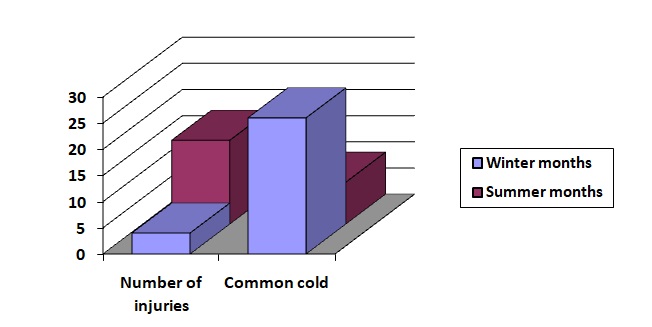
The conducted interviews also indicated that sales managers were more likely to take sick leaves due to stress or mental illness. Out of twenty interviewed sales managers, fifteen stated they had taken at least one sick leave due to stress or mental illness in the past nine months (interviews were conducted in October 2015).
The interviews conducted with HR managers indicate that they tend to take sick leaves due to stress as well, although not as often as sales managers; only two of the interviewed HR managers admitted they had taken sick leaves due to stress during the past two years.
I interviewed all of my coworkers (15 individuals) and asked the managers to provide additional information about sick leaves in our organization. To ensure that the findings can be represented in a user-friendly manner, I left only the most common reasons for sick leaves. The pie chart below provides more detailed information about the issue (see Figure 3):
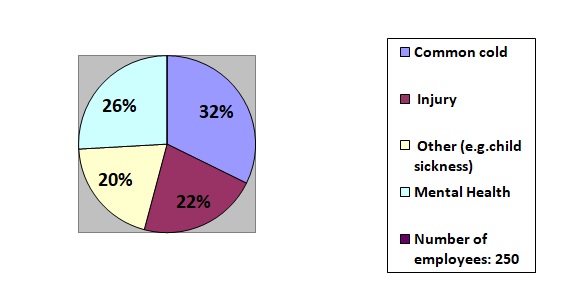
It should be noted that the information presented in the pie chart relates to October-March 2015-2016. As it can be seen from the pie chart, the management in my organization does not address the high rates of burnout and stress that eventually lead to mental health problems (26% of all leaves were due to stress and exhaustion). Therefore, I can conclude that mental health problems and lacking personnel are not seen as sufficient reasons to investigate absenteeism among coworkers. Although stress’s impact on employees is evident, the issue remains unaddressed. Furthermore, the managers also do not hire temporary staff to avoid increased workload.

The problems of lacking employees and workforce shortage are standard for public services; customers’ dissatisfaction is usually triggered by this issue, as well as poor quality of services. However, poor quality of services is, usually, the consequence of the poor management policy of absenteeism. Employees are incapable of providing quality services if there are six employees instead of demanded ten. Therefore, workforce shortage is the primary problem that leads to others discussed above.
Several recommendations can be provided to my organization. First, workforce shortage needs to be addressed as a crucial issue. Additional (temporary) staff needs to be hired to ensure that employees can avoid burnout during the leaves of other employees. Second, mental health hygiene needs to be implemented on the organizational level. Events dedicated to stress, coping, and relaxation techniques need to be established and conducted at least three times per year. Additional workshops about mental health issues can also be considered. Third, line managers need to be taught about the impact of mental problems on employees’ effectiveness.
For the CIPD report, I analyzed and interpreted data by accurately learning the indicators of sickness absence in different sectors, including public, private, manufacturing and production, and non-profit sectors. The CIPD report indicates that the major reasons for sick leaves are minor illnesses, stress, and injuries, which aligns with the information collected from the target organization.
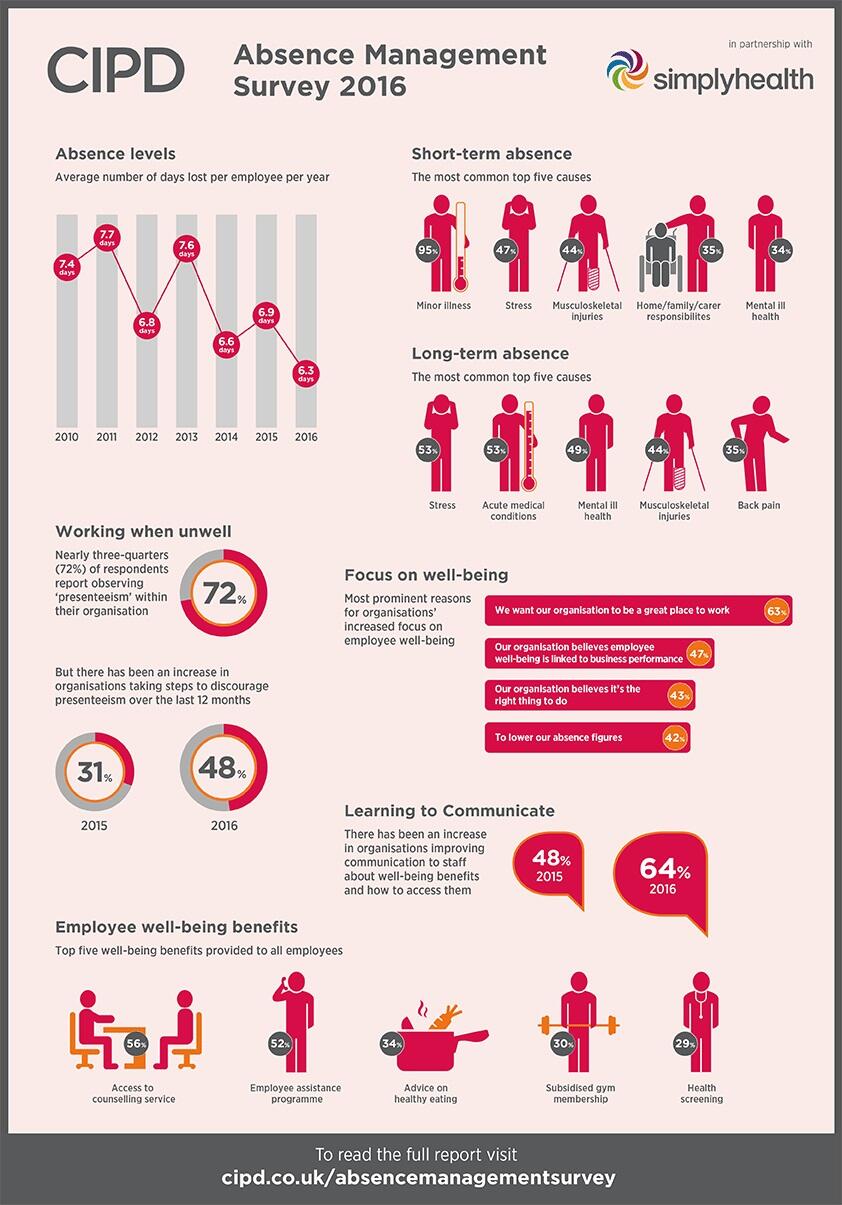
To provide a range of appropriate recommendations, I learned the results of the survey conducted by CIPD and suggested my own decisions related to the organization’s objectives. In particular, the role of an HR manager in the context of sickness absence management was specified.
The following recommendations can be given based on the analyzed survey related to sickness absence in the UK: to improve the focus on reports to line managers as well as the overall well-being of the staff to reduce sickness absence. In the context of decision-making, it should be stressed that the goal of an HR manager is to facilitate the awareness of the employees of the mentioned requirements.
This can be achieved by the creation of an efficient human resource management system and social processes in the organization, providing the conditions for the initiative and creativity of the employees and taking into account their individual characteristics, knowledge, and skills (CIPD 2016a). Additional attention should be paid to the mental state of the employees.
The findings of the research indicate that sales and HR managers tend to take sick leaves due to stress, possibly because of lacking support for mental health hygiene at the organization. Other employees (cashiers, guards, customer support) took sick leaves due to the common cold in winter months and injuries in summer months, which is related to season-based activities and illnesses. The HR managers should raise awareness of safety measures during summer months and disease prevention (e.g. vaccination) during winter months to decrease the number of sick leaves.
Conclusion
In conclusion, it should be emphasized that HR and L&D data analyzed in this section represents how to understand the employees’ performance and what motivates them. Knowing the mentioned aspects, an HR expert can effectively manage sickness absence in the organization. In the course of analysis, it was revealed that the key strategies to reduce sickness absence are to engage employees and provide them with an adequate working environment.
Reference List
About HR and L&D 2016, Web.
CIPD 2016a, Absence management, Web.
CIPD 2016b, Absence management – public sector, Web.
Crawshaw, J, Budhwar, R & Davis, A (eds.) 2014, Human resource management: strategic and international perspectives, Sage, London.
Morgan, R & Boardman, R 2012, Data protection strategy: implementing data protection compliance, Sweet & Maxwell, London.
Wilton, N 2016, An introduction to human resource management, Sage, Thousand Oaks.

